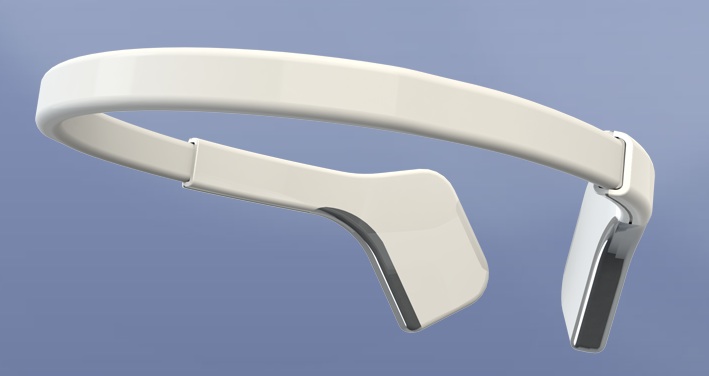Brainwaves as passwords; secure and near reality

Think and you shall log-in.
It sounds futuristic, but the technology to do so could be here as early as June 2013. And forgetting a password could become a thing of the past.
InteraXon, which develops thought-controlled computing, is releasing a headband sensor device this summer designed to bring brainwaves into computing.
While there is not currently an authentication application that works with InteraXon’s Muse headband, company CEO Ariel Garten says such an app is reasonable and possible and the company has a software developer’s kit (SDK) for anyone who wants to do it.
“The user could create a specific brainwave signature or a password they would never have to say out loud or type into a computer,” said Garten, who spoke last week at the Blur Conference in Broomfield, Colo., and demonstrated thought-controlled applications and Muse, which ships next summer.

While brainwave passwords might conjuror up thoughts of being snatched off the street and having a brain drain, Garten said the technology isn’t mind reading.
“People might think the government can read their pin number, but we can’t read your thoughts or images in your head.” Muse, which talks to devices via Bluetooth, is an electroencephalograph (EEG) that records brainwaves and reads the brain's overall pattern of activity to detect certain states such as relaxed or alert.
For example, brains of people in relaxed states create gentle, slow-moving alpha waves, while those engaged in intense concentration generate quick, jagged beta waves.
The brainwaves are turned into binary data and the translated waves are used to control anything electric. Users can learn to manipulate brainwave patterns, similar to flexing muscles.
“Current brain games build your brain like carrying groceries in from the car,” says Garten. “This builds your brain like doing bench press reps in the gym. You are working directly with your brain, getting feedback and you can use that information to improve your brain directly. It helps you build a better brain and a better you.”
The slim plastic Muse headband fits against a person’s forehead and slips over the ears. The band houses four brainwave sensors.
Applications that run on smartphones, tablets or laptops include games controlled with the mind and brain fitness apps that improve attention span and increase working memory.
And there is a more serious side. Applications can help people recognize when they are at their peak productivity and when they are not, they can be devised for a low-cost seizure warning system for those with epilepsy, or help kids with attention deficit disorder.
Garten found that kids who played video games with their brains “can improve their ADD symptoms as effective as Ritalin. You are improving symptoms, but also teaching them about their own brain and giving them options.”
If it all sounds like science fiction, Garten agrees.
Her work builds on thought-controlled computing technology initially developed by world-renowned cyberneticist Dr. Steve Mann, who has been described as the father of wearable computing and the world’s first cyborg, and his colleague, Dr. James Fung.
Garten, Mann and Fung, along with InteraXon CTO Chris Aimone, have been working on various brainwave-controlled art installations and technology demonstrations around Toronto, Canada, since 2003. At the Vancouver Olympics, attendees had a chance to use their brainwaves to control the lights on Niagara Falls, the CN Tower and the Canadian Parliament Buildings.
Garten, who formed InteraXon in 2007, is an artist, fashion designer, has studied hippocampal neurogenesis at the Krembil Neuroscience Institute and is a practicing psychotherapist. She is known for her work blending art and neuroscience.
Her Ted talk on thought-controlled computing has garnered more than a quarter of a million hits.
She says Muse is grounded in both technology and the understanding of humans.
“Brainwaves are phenomenally complex and then you have the human side of how do you make apps that people care about, that are intuitive and easy to use. Our expertise has to straddle both.”
Garten believes the technology is set to take off. “In 25 years, interacting with technology using your mind will be as ubiquitous as gesture is today.”